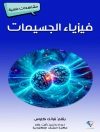This book provides fundamental knowledge in the fields of attosecond science and free electron lasers, based on the insight that the further development of both disciplines can greatly benefit from mutual exposure and interaction between the two communities.
With respect to the interaction of high intensity lasers with matter, it covers ultrafast lasers, high-harmonic generation, attosecond pulse generation and characterization. Other chapters review strong-field physics, free electron lasers and experimental instrumentation.
Written in an easy accessible style, the book is aimed at graduate and postgraduate students so as to support the scientific training of early stage researchers in this emerging field. Special emphasis is placed on the practical approach of building experiments, allowing young researchers to develop a wide range of scientific skills in order to accelerate the development of spectroscopic techniques and their implementation in scientific experiments.
The editors are managers of a research network devoted to the education of young scientists, and this book idea is based on a summer school organized by the ATTOFEL network.
表中的内容
Part I Laser Techniques
Ultrafast laser oscillators and amplifiers
Ultrashort- pulse characterization
Carrier- envelope phase stabilization
Towards tabletop x-ray lasers
Part II Theoretical methods
Ionization in strong low- frequency fields
Multielectron high harmonic generation: simple man on a complex plane
Time- dependent Schrödinger equation
Angular distribution in molecular photoionization
Part III High harmonic generation and attosecond pulses
High- order harmonic generation and attosecond light pulses
Strong- field interactions at long wavelengths
Attosecond dynamics in atoms
Attosecond processes in molecules
Attosecond electron dynamics in nanosystems
Part IV XUV and x-ray free electron laser experiments
Strong- field interactions at EUV and X-ray wavelengths
Ultra intense x- ray interactions at the Linac coherent light source
Coherent diffractive imaging
关于作者
Thomas Schultz coordinates scientific aspects of the ATTOFEL network. He graduated from ETH Zürich. After receiving his Ph D in Chemistry he became a visiting Visiting Fellow at the Femtosecond Research Program in the National Research Council Canada. Since 2003 He is a Project leader at the Max Born Institute in Berlin. His research explores the photochemical elementary reactions in biologically relevant systems through ionization spectroscopy of molecules and clusters.
Marc Vrakking is Scientific Director of the Attoscience Group at the Max Born Institute in Berlin, Germany. He graduated in Physics and received his Ph D in Chemistry from the University of California Berkeley, USA. He was a Professor of Physics at the University of Nijmegen, NL, and has served as group leader in XUV Physics at AMOLF. In 2010 he joined the Max Born Institute, and has been appointed Professor of Physics at the Free University of Berlin.












